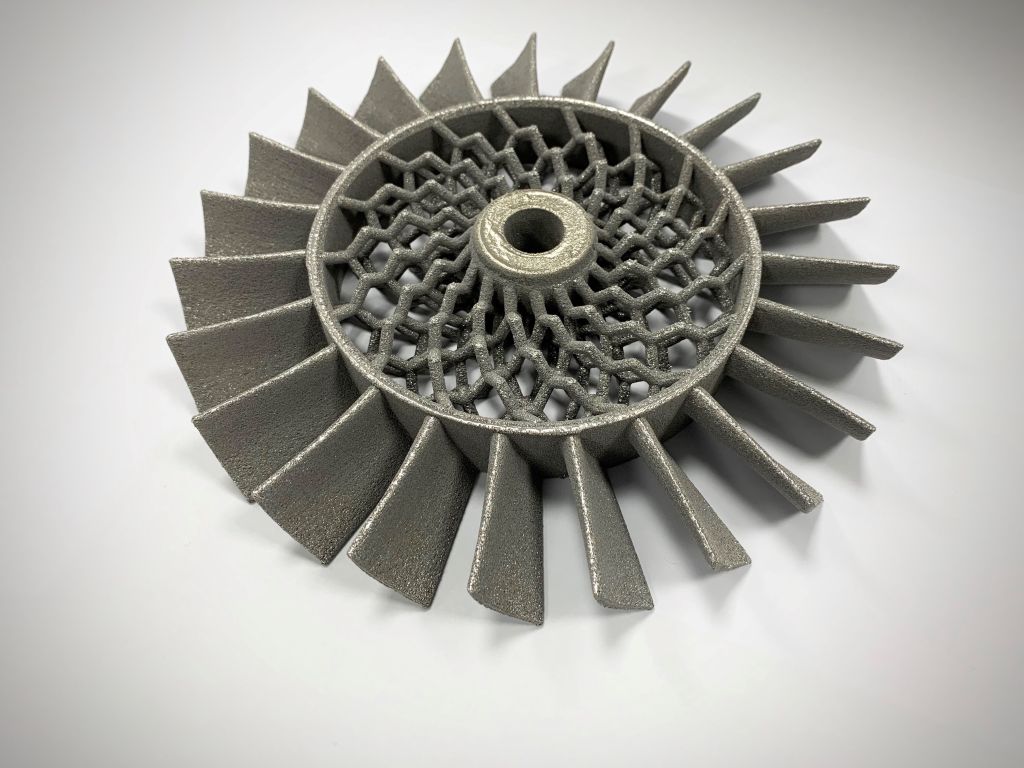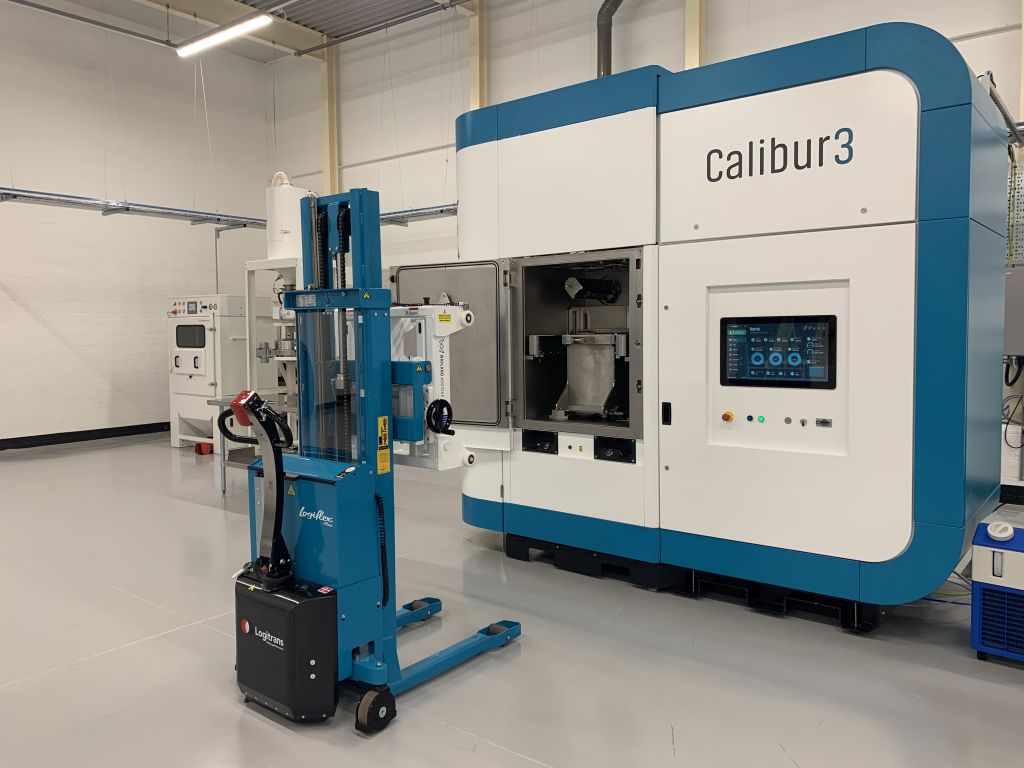A beam of additive innovation

In this Q&A session Peter Hansford, director of business development at powder bed fusion innovators Wayland Additive, discusses the advantages of its NeuBeam technology for future aerospace applications.
Wayland Additive was founded in August 2019 emerging from a project to develop an alternative electron beam powder bed fusion (PBF) additive manufacturing (AM) system that solved some of the inherent issues found in existing market offerings. Starting with 14 people it is now shipping machines worldwide and currently has more than 60 employees, designing, manufacturing, and servicing its products.
Q) Are Wayland machines being used for aerospace applications?
One of the first two machines delivered has gone to develop solutions to keep military aircraft in service. Increasing aircraft availability to operate is key. Wayland is proud of this, and we are working closely with our customer to further develop their capabilities.
Q) What are the advantages of your NeuBeam process for this kind of manufacturing in the aerospace and space sector?
The biggest asset is having a stable E-beam platform that is not prone to smoke events, i.e. build failures. NeuBeam technology removes this handicap and helps keep productivity high. Also having insight into the builds via infrared cameras and white light topology scanning helps with qualification and quality assurance for each build.
Q) Can you explain more about Wayland’s Calibur3 machine and its advantages?
In the past, parameter settings have been limited with E-beam systems, the process was tightly controlled because small changes could upset the balance of the process, leading to instability (smoke events) which are almost always catastrophic. Calibur3 has NeuBeam or neutralising technology that greatly reduces the chance of smoke events, leaving a very stable environment within which to work.

Therefore, it’s much easier to change parameters without disasters. This allows us to give the customers what they want, i.e. they can tune the parameters for production, to suit their needs, improving part quality or mechanical properties much more quickly.
Q) What are the certification issues when it comes to additive parts in aerospace? Do you think the industry is developing a consensus?
We have a way to go before the industry can agree on the standards for metal AM. You have multiple approaches technically from Directed Energy Deposition (DED), Powder Bed Fusion (PBF), both laser and E-beam, etc. What we can provide is a huge amount of data per build, and we can identify areas of the build for further inspection. We can correlate that data to the physical part. Wayland is working with partners to develop the tools to allow easy inspection of the builds, along with more certainty of quality. Not all suppliers of metal AM systems are in the same situation on this front. We are working independently at this stage to assure quality but we need more collaboration to develop robust solutions.
Q) What impact do you think electrification/hydrogen power will have on additive technology used in aerospace?
If we look at electrification, we need to think about efficient copper windings. Developing these takes cooperation and we are actively engaged on this front to develop pure copper AM windings to improve efficiencies.
On the hydrogen front, you will need high temperature material capabilities. We know our technology can print higher temperature materials and hold that temperature throughout the build process. There are Ni-based super alloys in our roadmap. NeuBeam technology can hold higher temperatures more easily than existing E-beam systems.
NeuBeam is a hot part process rather than a hot bed process. This efficiently creates parts that are free of residual stresses because the high temperatures are only applied to the part and not the bed, ensuring free-flowing powder post-build (no sinter cake) and stress free parts with reduced energy consumption. Not having to heat the entire bed also makes building such parts less time- and energy-consuming.
Q) Is there a sea change in the adoption of additive technology, i.e. a move away from rapid prototyping to higher volume production?
We see that people in the industry have tried to adopt metal AM but have looked at existing designs and tried to use AM for parts originally designed for machining, castings, etc. This doesn’t always make economic sense. Metal AM has the quality required for production. Manufacturers need to design for all technologies including AM, this will happen with future aerospace platforms. Reducing assemblies, weight saving and the drive for efficiency will increase the use of metal AM in the industry.

Design for additive manufacturing (DfAM) is vital when using metal AM. It enables designers to leverage the unique capabilities of AM, optimise material usage, simplify assemblies, enhance performance, optimise manufacturing processes, and accelerate design iteration. By embracing DfAM, aerospace manufacturers can unlock the full potential of AM technologies.
Q) What is the skills situation around additive manufacturing? Is there a coherent training programme available?
There is a need for investment on this front. Ex-university students cannot fulfil the number of people required. It’s down to manufacturers to develop the skills they need and we are keen to invest and train people to join the industry. We do train internally and end users, but we need more awareness around design for AM and the capabilities of each technology.
Q) Do you think Automation, AI, Industry 4.0 will have much impact on your technology?
Automation has a big part to play in consistency and productivity. This is most evident post build. Downstream processes can be automated, leading to higher productivity and consistency. Therefore faster production of higher quality parts. We are also developing AI to help during the build process itself. We know, for instance, what a good temperature profile looks like during the melting phase. Our aim is to make sure we control our process so that it delivers this on every layer on every part. That way, the end users gets the quality they expect and the processes are repeatable on multiple platforms.
Q) What has been the response to your technology from the aerospace industry?
The response has been very positive, so we are very optimistic for the future of Wayland in aerospace and other markets. The aerospace industry understands the various AM technologies and in Wayland, they can appreciate the ability to process difficult to process materials, alongside the ease-of-use of our process, and the value of our in-process monitoring system. Only through partnerships and working closely with each other can we successfully achieve the results required. Wayland remains open and collaborative in our approach. We need to develop future platforms to fulfil the needs of our customers, so it’s important we work hand in hand with them. A true product development partnership!











